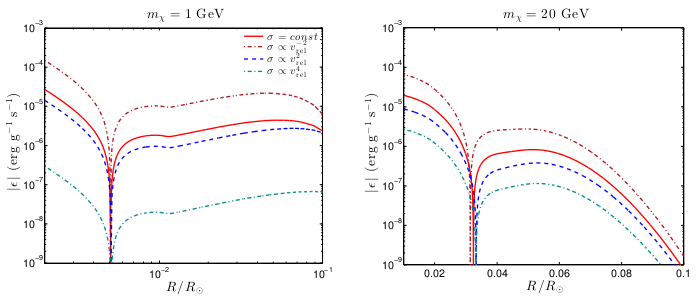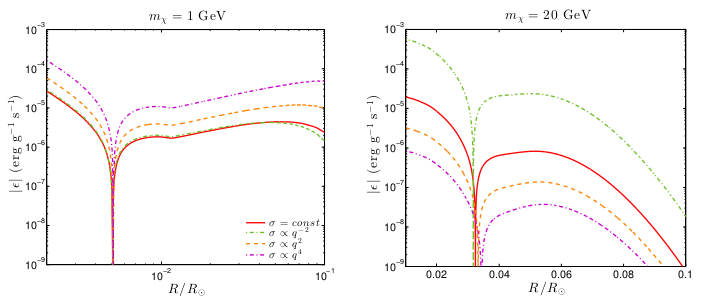- Title: Thermal conduction by dark matter with velocity and momentum-dependent cross-sections
- Authors: Aaron C. Vincent, Pat Scott
- First Author’s Institution: Instituto de Física Corpuscular (IFIC), CSIC-Universitat de Valencia
Astronomers typically think of dark matter as some mysterious, ghostly substance permeating our galaxy on the largest scales. Not much consideration is given to the potential impact of dark matter in our own Solar System, but the authors of this paper suggest that dark matter particles might play a role in the structure and development of our own Sun.
Dark matter particles are largely considered to be WIMPs (Weakly Interacting Massive Particles), which have some cross-section that allow them to interact with nucleons. While the cross-section of dark matter particles is believed to be very small (as illustrated in observations of the Bullet Cluster), collisions between these particles and nuclei in the Sun might allow some amount of dark matter to become gravitationally bound. This in turn, might affect the Sun’s structure and evolution by enhancing energy transport through WIMP-nucleon interactions.
Previous treatments of this type of energy transport assume that the dark matter scattering cross-section is a fixed constant. In this paper, the authors compute heat transfer rates due to dark matter particles scattering with nucleons. Instead of a constant cross-section, the authors explore the possibility of cross sections that depend on the relative velocity or momentum
exchanged between particles.
The authors consider two quantities of interest in computing energy transfer rates: how efficiently dark matter particles diffuse through a medium, and how efficiently dark matter particles transfer heat between layers within the stellar interior. The authors make a few simplifying assumptions in their computations:
- WIMP-WIMP interactions are negligible (since they occur less frequently than WIMP-nucleon interactions)
- Scattering is isotropic (equal in all directions), and the medium is in local thermodynamic equilibrium (i.e. temperature gradients are relatively small)
- Energy transport is primarily conductive
In considering different cross-section dependencies, the authors find that energy transport is suppressed with cross-sections proportional to a higher power of (Figure 1). For a dependence with positive powers of
, scattering is enhanced with high velocities. This has the net effect of decreasing the outward diffusion of dark matter particles and decreasing the efficiency of heat transport. Conversely, cross-sections proportional to negative powers of
enhance scattering for low velocities.

Figure 1: Absolute energy transported by WIMPs of masses GeV and
GeV with velocity dependent cross-sections. Transported energy is negative at small radii (below the dip) and becomes positive at larger radii, representing transport from the solar core into outer layers.
For momentum-dependent cross-sections, energy transport is instead enhanced for cross-sections proportional to a higher power of (Figure 2). However, cross-sections proportional to negative powers of
can enhance heat transport by several orders of magnitude for higher masses. Cross sections that enhance energy transport will also affect how dark matter particles are captured by the Sun, as WIMPs have to lose enough kinetic energy in order to fall into the Sun’s potential. This accumulation of dark matter can lead to observable effects on Solar structure.

Figure 2: Absolute energy transported by WIMPs of masses GeV and
GeV with momentum dependent cross-sections.
While this type of dark matter capture and energy transport can lead to interesting effects in stellar structure and evolution, the cross section itself must be relatively large ( cm
) in order for dark matter particles to accumulate so that any effects are observable. The authors also suggest that these enhancements in energy transport might be a viable solution to the solar abundance problem, in which the observed Solar metallicity is 10-20% lower than the one calculated. This discrepancy might be explained by an enhanced energy transport through WIMP-nucleon interactions, although a more detailed modeling of the Solar interior is needed to accurately predict this effect.




